Age of Empires II: Age of Kings
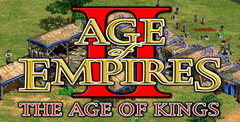
| a game by | Microsoft |
| Platforms: | PC, Playstation 2 |
| Mode | Single-player, Multiplayer |
| Setting | Middle Ages |
| Gameplay | Base-building, resource management, technology research, and combat |
| Playable Civilizations | 13 civilizations, each with unique strengths, weaknesses, and technologies |
| Graphics | 2D isometric sprites and terrain |
| Editor Rating: | 8/10, based on 5 reviews, 6 reviews are shown |
| User Rating: | 7.0/10 - 85 votes |
| Rate this game: | |
| See also: | Download Strategy Games, Games Like Red Alert, Age of Empires Series, Games Like Clash of Clans |
The best compliment I can give Age of Empires 2: Age of Kings is that even after all these years I still play and enjoy the hell out of this game. There are so many strategy games these days that we are spoiled for choice. However, while it may not be the best looking by today's standards, I feel that this is a game that holds up in every single regard and is still one of the most rewarding strategy games ever created.
From The Dark Age
As is the case with most other strategy games of this type, Age of Empires 2: Age of Kings spans multiple “ages” as you progress through the game. You will be starting off in the dark ages where you have next to nothing and are constantly fighting for survival. After this, you move onto the Feudal Age where you now have warriors and can start advancing your “technology” where you can have stuff like chainmail armor and wheels for moving stuff.
You then advance to the Castle Age and here you can build, well castles and more advanced weaponry and fortifications. The final age in the game is The Imperial Age and this is a far cry to what you were doing in the dark ages! You now can have an elite city with paladins that can kick some major butt. There is a fantastic sense of progression in the campaign and everything makes perfect sense.
So Many Civilizations
It is very impressive how the Age of Empires 2: Age of Kings not only has 18 different civilizations in the game but how different they each are. At a glance, it may look like there are only subtle differences, but the differences are quite deep. Each one has their own “special” unit. The British can expert bowmen and the Franks can do heavy damage with throwing axes for example.
The way the battles work is very clever in that each unit can crush another type, but there is also a counter for each unit. It is a delicate balancing act and really requires you to think about how you go about things on the battlefield. It is this kind of gameplay that makes this such an addictive game for me.
Rule The World Your Way
A huge part of what makes this such a popular game is that it is up to you how you play it. I am the kind of player that likes to steamroll my enemies before they have a chance to get too powerful. This means I have to rise very quickly and get my units up to speed as quickly as I can. Other players might like to take a more balanced approach or go for something that is more defensive. It is really up to you how you go about trying to prove your might in this game.
Still Some Charm
As I write this, we are talking about a game that is the better part of 20 years old. Even with that being said, I feel the visuals hold up fairly well. They may not be as sharp or as detailed as a modern real time strategy game, but you can still easily tell what everything is supposed to be in this game which is all you can really ask for.
I could go on and on forever about what an amazing game Age of Empires 2: Age of Kings is. The fact of the matter is that in a review like this, I can only touch the surface of what makes this such an amazing experience. The level of choice that you have is just staggering and something even many modern RTS games have not come close to offering. Rather than reading a load of stuff about this game, I demand you to just go and play it right now!
Final Score
Pros:
- Each of the civilizations feels unique
- I liked how each civ had their own special unit
- So many tactics that you can use!
- The campaign is nice and long (that’s what she said)
- It is one of the best RTS games ever made!
Cons:
- The visuals are not as sharp as a modern RTS
- Sometimes it can throw to many choices your way!
Download Age of Empires II: Age of Kings

Minimal System Requirements:
- OS: Windows 8
- CPU: Intel i3-2105 3.1GHz or AMD Phenom II X4 973 with an average CPU Passmark score of 1830
- RAM: 8 GB
- Graphics: GeForce GT 430, Radeon HD 5570
- DirectX: 11
- HDD: 30 GB
- VRAM: 2 GB
System Requirements:
- OS: Windows 10
- CPU: Intel i5-3300 3.0GHz or AMD FX-8350
- RAM: 16 GB
- Graphics: GeForce GTX 980 or Radeon R9 Fury
- DirectX: 11
- HDD: 30 GB
- VRAM: 4 GB

System requirements:
- PC compatible
- Operating systems: Windows 10/Windows 8/Windows 7/2000/Vista/WinXP
Game Reviews
William H Gates III may well be the stepson of Satan, but by the horns of his adopted father, the boy's done all right for himself. No matter what gripes you have over Internet Explorer, DirectX or Windows, Microsoft's games have come on leaps and bounds since they released that soccer game a few years back.
Significantly, in fact, since Age Of Empires, Microsoft's steady stream of entertainment applications has generally been of a very high quality. And if Ensemble Studios' Age Of Empires IIis anything to go by, Microsoft's next batch of games are going to be even better.
Early Hours
Initially, after just a few hours of dabbling with the game, indulging in a spot of one-player skirmishes or dipping a toe into one of the five single-player campaigns, I wasn't too impressed. I actually blurted out - to my eternal shame - something along the lines that it was a bit shit. Then, as the hours rolled by, I gradually warmed to its hidden charms. I wouldn't go as far as to say that Age Of Empires II is the most addictive game on the planet, but I can certainly see myself playing it on a regular basis, at least until the next game appears in a couple of years' time -which I'm sure it will.
First impressions, then, are a bit 'been-there, done-that'. You collect resources (in this case food, wood, stone and gold), then you assemble buildings, spend resources on military units and then twat your opponent into submission, be they real or not.
However, it's not quite that simple. If we take the resource management side of things, it would be fair to say that Age II has no equal on PC. Getting food isn't just about sending your peasants off to gather nuts. You can herd sheep, hunt deer, pick berries, fish and farm. Then you have to build a mill to hoard your dead meat and fruit before it starts to smell, likewise, you'll need a mining camp to stash gold and stone, a lumber camp for wood and a dock from which you can send ships to dredge the oceans. The resource management could be a game in itself (though not a very good one, admittedly).
Go On Then, Say It...
'But we have been there,' I hear you all cry, and in a sense you'd be right. If you've played and enjoyed the original Age OfEmpires, you'll feel right at home with its sequel. You have the same resources to collect, essentially the same ages to progress through (though this time they're called Dark, Feudal, Castle and Imperial), and largely the same types of units: infantry, cavalry, siege weapons and ships. Like its predecessor, however, Age 2 is a carefully balanced blend of units, all of which have their strengths and weaknesses, and like all strategy games, Age II is the interactive equivalent of two people whipping their hands from behind their backs and one shouting 'Nyah, stone blunts scissors', before promptly being beaten about the jaws. It all comes down to evolution, really, and Age II is as about as highly developed a game as you are likely to find. Its subtle differences from its illustrious forefather may be small in number, but they have a big impact. Where the first game was brilliant, if a little rough around the edges, the sequel has been buffed up to a glorious shine.
After a brief introductory movie, you are immediately thrown into the usual opening menu. No doubt many people, most of whom will be familiar with the first game, will delve straight in by choosing a map, take charge of one of the 13 civilisations and start building with a few chums, whether they're online or artificial. To miss the single-player campaigns, however, would be a mistake. Unless you're a complete newcomer to this type of game (ie you're still trying to get your PC's foot pedal to work), I would avoid the William Wallace training campaign and plump straight for the Joan Of Arc series of missions. Whatever campaign you choose, you will notice straight away that far from each separate mission being a cut-down version of the skirmish-type of game, where you just build a base of operations and hunt down the foe, in most cases you start off with a ready-made army prepared for battle. You'll notice, too, that each mission has its own graphics, unique buildings and many scripted elements, as well as a historic background for you to lose yourself in. You will often march into a pitched battle between two massive armies, and although you won't be able to join in, you'll certainly want to watch.
It has to be said that some missions are very craftily written. I was stuck for a couple of hours on one where two British tribes were attacking my city and I had to destroy one of their castles. Waging a war on two fronts, as you know, is pretty tricky. How, then, to keep one enemy at bay while taking on the other? I figured it out in the end. Age II is not always about brute force -you need at least half a brain as well. Thankfully, one half of mine is still active, if a little slow.
KNIGHT LORE
Whether you play a full campaign, where your objectives are obvious and the means to achieve them are limited, or a deattimatch or random game where the scope is much broader, what is essentially so right about Age II is the balance of each of the units. Laying siege to an enemy settlement isn't just about planting a line ot trebuchets or bombardiers and pounding a wall into the ground. Enemy archers, garrisoned in guard towers will make short work of them. Then there's the knights streaming around the corner to worry about.
There are so many subtle strategies that come into play that every assault runs the risk of facing a successful counter. You can't be sure of anything. Just to illustrate this, there are 19 different infantry units, some of which are unique to the various races, but each is a specialist to some degree.
Add to that the option to upgrade armour, strength and weaponry, and the fact that each race has its own innate strengths, and you can see that to get good at any one strategy with one particular race could take a great deal of time.
What has always lifted the Empires gams above the norm has been the research elements. Churning out village idiots armed with sharp sticks is of no use if you come face to face with a bunch of finely-tailored infantrymen packing 'hand cannons'. Unless you can counter them with sheer weight of numbers, you'll need to get researching. To get your hand on Hand Cannoneers (assuming you've picked a race that can build them), you'll need to research chemistry, which means you'll have to have built a university in the Castle Age.
Not all research is military in nature, of course. One of the first buildings you'll assemble will be a mill to store food, allowing you to build a market once you advance to the Feudal Age, allowing you the benefit of trade. There are many more technologies available than in the first game: various types of armour, specific skills that boost particular units or extend their capabilities, and all the while you are building various units in the full knowledge that everything has a price, be it in gold, food, stone or wood. In short, every element in the game -collecting, building, fighting, researching - is integrated almost seamlessly into one big gaming ball of loveliness.
Anew Age
Some people have been critical of the computer AI in Age II, being a bit dumb. For sure, it's not perfect, but you have to realise that the game is aimed at all levels. If you've played the first game for any length of time, you can avoid the two lower difficulty settings for a start. In fact, due to one fat, annoying bug, the computer player will give up minutes into a deathmatch game set on 'easiest'. At its most difficult, the game is insanely forbidding - one for those who can pull off countless keyboard shortcuts at the same time.
In multiplayer games, of course, there are no such problems. And as with the singleplayer games, there are countless strategies open to each player. Walls and buildings are now harder to destroy, seige weapons are susceptible to any kind of attack, and infantry units are easily decimated by archers. Rushing certainly isn't impossible, but it is difficult to pull off - which is how it should be.
With the graphics, I was a little disappointed with some of the animations, specifically the larger units (ships and siege weapons) and their abrupt changes in direction as they traverse the map.
Perhaps my only real criticism is that the Age II is essentially an update ot a two-year-old game. Many of the units are just ported over from the first game; the Monks, for example, who have the ability to convert enemy units to your side, are just a medieval version of the old Healers. And the long-drawn-out castle sieges that characterised the period are too fast-paced for my personal taste.
History Lesson
Whether you choose to invest in Age Of Empires 2will depend on a number of factors. If you never liked the first game, prefer more action-orientated strategy, or -like Steve Hill - can't abide games where 'it feels like you're in a history lesson', you certainly won't find much to light your fire.
If you wanted to be a real wanker, you could say this is merely Age Of Empires v1.5, to which I would say Tiberian Sun is just CSC v1. 1. And I think many people would agree with that.
On the other hand, if you absolutely adored the first game and you aren't expecting anything radical from the sequel, you'll instantly find The Age Of Kings to your liking. As you play the game, you'll be constantly discovering little enhancements, all of which add up to a finely tuned and perfectly balanced game.
Overall, though, Age II pretty much covers everything you could want in a real-time strategy game. It's attractive, epic in scope and so endlessly varied that you'll still be dabbling in it two years from now. As the genre starts to embrace 30, Age Of Empires II is sure to be looked back upon as the last in a dying breed. Without doubt, it is the best and to miss it would be a crime for which you should be hung, drawn and quartered.
The Knights Who Say...
Breaking the sound barrier
Although the dialogue for each of the campaigns is cheesy (whoever did the Scottish accent for the William Wallace campaign should be shot), the sound is generally very good. Many sounds remain indistinguishable to the first game, but now, instead of one voice for all the races, each civilisation has its own. The villagers, of course, as you would expect, have all the best lines and consequently are just as intentionally humorous as in the first game. Not laugh-out-loud funny by any means, but certainly more interesting than the repetitive 'Yes Sirs' of other real-time strategy games.
It's The Little Things That Count
What's new in Age II
New Options
When building units, you can set gathering points for each building, to which each new unit will rally when produced or 'ungarrisoned'. Even better, place the gathering point for your Town Centre on a forage bush and each new villager will automatically start gathering berries for you to stockpile in the nearest mill. No longer will you have to spend ages searching for slothful villagers, either. Click on the 'Idle Villager' Icon and the screen will centre on any non-military unit that hasn't yet been put to work. Perhaps one of the best new features, for newcomers at least, is the option to pause the action at any time and take stock of the game. A quick stab at the F3 key and you can scroll around the play area, queue up orders and have a piss before resuming the action. Neat, eh?
New Combat Features
As well as setting your armies to be either aggressive (where they go berserk at the first sign of the enemy), defensive (where they'll come back after chasing the foe for a short distance), or to stand their ground, you can also 'garrison' your archers and swordsmen in castles and barracks, so that from relative safety, they can rain arrows upon the advancing ranks. At the ring of a bell, villagers can now be summoned to the town centre, whereas previously they were vulnerable to attack. One of the game's niftiest combat features allows you to form your grouped units into various formations, with cavalry at the fore, pikemen behind and seige engines trundling at the rear. All grouped units move at the speed of the slowest, with the hand-to-hand units breaking rank at the first sight of the enemy.
King Of The Castle
Reach the Imperial Age and each civilisation can finally build its very own castle, stick a few archers In there and be indomitable, at least until the siege rams come into view. Each castle allows you to create powerful rock-hurling trebuchets, as well as the one unique unit available to each race: the British have Longbowmen, the Japanese Samurai, and so on.
Trade Your Way To Victory
Tiding has been massh/ety overhauled in Age Of Empires II. As before, once you have a ramshackle trading centre at the heart of your settlement, you can sell excess resources to buy those you are short on, with prices fluctuating accordingly. One new feature, however, is the option to build trade carts, Depending on the distance between your ally's trade centre and your own, these will raise your income of gold - a valuable resource as you build more 'high-tech' units. The same is true with docks and trading ships.
New Game Variations
As well as the option to win by conquest, deathmatch games can also be won either by building a Wonder and defending it, holding a number of relics for a certain amount of time or a victory based on scores - which promotes trade, research and building. There is also a new game variant called Regicide, the aim of which Is to kill off the enemy's king while defending your own. If you have problems finding the defenceless monarch, a click on the Spying icon will soon highlight his whereabouts - for a short time at least.
Multiplayer Enhancements
At last, you can save multiplayer games, which means that for many Internet multiplayers, epic month-long battles can become a reality. Recording games is another new option, with little effect on speed. Each hour will take up around 1Mb of disk space and you can watch the action from the viewpoint of any player, even the Al-controlled ones, so you see how stupid or clever they really are. But you can't record the single-player campaign missions, which is a shame because we could have recorded a walkthrough and put it on next month's cover disc, saving us the bother of typing up the words. Oh well.
Two years ago, if you had asked the worldwide masses what the best real-time strategy game was, it would have been Dark Reign or Total Annihilation, with Age Of Empires trailing in third place. Since then, both Dark Reign and TA have slipped down the rankings and there's no doubt that it is the slow-bumer that has best stood the test of time. Even now, AOE and its expansion pack, The Rise Of Rome, are selling well in excess of what a game of its age should. Its offering of fast-paced strategic action coupled with Civ-style empire building and its infinite variety of gameplay has ensured that it remains one of those very few games that always creep back onto your hard drive from time to time.
For anyone who missed this gem of a game first time round, the aim was simple: choose a civilisation from the dawn of time and lead it through the ages (Stone, Tool, Bronze, Iron), collecting food, wood, stone and gold to build, trade and fight. In addition to the usual features then found in the common RTS, AOE offered more resources to collect and a balance of units which has yet to be bettered. More importantly, it was the 10,000 years of human history that set it apart from its tired sci-fi peers. AOE was, and still is, an epic game in the true sense of the word.
But wait. Every silver lining must have its cloud, and for Age I (as developers Ensemble Studios regularly refer to it) it was its single-player game. Not the single-player deathmatches you understand, but the campaign. After the variety and vast scale of the one-player random maps and multiplayer games, the confines of a series of poorly structured missions seemed at odds. It wasn't that the missions were particularly bad, they just failed to capture the epic sense of the passing of time that the 'full' game provided. There were no surprises either, something that Total Annihilation, for all its 3D graphics and devastating pace was just as guilty of.
"Greg Street, Sandy Petersen and Chris Rippy - among others - are the ones really responsible for addressing the single-player game," says Ian Fischer, designer of Age Of Kings, and a thoroughly nice chap who wouldn't look out of place behind a desk in your local Abbey National or a drum kit in a death metal band. He accepts that Age 1 failed, in part, to provide a cohesive single-player story for all its epoch-spanning glory. "Greg (a marine biologist by trade) hasn't even been here a year and yet he's done pretty much everything for our scenarios. He's really good at evaluating what makes them interesting. He scrutinised a lot of RTS games, took a critical look at the first AOE and then handed the programmers a list of what he thought would improve the single-player game."
Single Life
For the sequel, instead of opting for one sprawling campaign, Ensemble have created a number of smaller 'campaignettes'. A Braveheart-style tutorial starts the series and puts you in command of William Wallace. Others, gradually increasing in difficulty, feature Joan of Arc and Genghis Khan. Inspired by Half-Life, missions will include in-game sequences where your troops witness massive battles. Most importantly, the missions will have a cohesive story that injects personality into the heroes within the game.
"A large segment of our audience will prefer the single-player campaigns," says Ian. "We didn't allow scenarios and campaigns to become too cinematic, we wanted to include in-game scenes that kept the focus on the game and propelled the story forward, not only between missions, but during them, too."
Before you start thinking that if you've played one huge-scale multiplayer game, you've played them all, Age IPs campaign missions will include specifically-made buildings and artwork. The idea is to provide a fresh alternative to the epic battles of single/multiplayer deathmatches.
"It's strange," says lan "but things like that add so much to the game. If you'd played skirmish or multiplayer games in Age 1, you'd have come across almost everything there was to do. Now we've included buildings in the campaign missions that aren't in the multiplayer game. They may not have a big impact on the way the missions are played, but it keeps everything fresh, with big cities, encampments and new scenery objects. We call them sandwiches - they're like little prizes that keep people interested."
A Rush And A Push And The Land Is Ours
So what else is better about this sequel? Well, for starters, it's set right about the time the mighty Roman Empire, and Europe as a whole, fell apart. Again, the game spans 10,000 years, taking in the Dark Ages. As a result, instead of phalanxes and chariots there'll be knights in shining armour and rock-hurling catapults. The interface is more streamlined, with more commands - production queues, for example. The game also includes a host of new features: troops can be garrisoned in towers and other buildings and villagers can be alerted and sheltered from attack. There are more race-specific units, a greater variety between the 13 civilisations, and the technology tree has been broadened.
"We've made it so that there are more strategies to choose from when it comes to progressing through the ages," explains Ian. "By making some of the technologies in Age I smaller and more discreet, there are now more options as to how you tailor your game plan. This is in addition to the fact that you can win via economic or military means, and should provide a lot more scope."
But this broadening of strategic options isn't just limited to the single-player game. Ian has made it his mission to look at how people played the first game, with a view to expanding the ways in which war is waged and to make it easier to counter your opponent's tactics. "A lot of people said there was too much rushing (where you have to get more units into someone else's town before they're ready for you) in the first game. It wasn't as if it made the game miserable because 90 per cent of the time people figured out a way to counter rushing. In that respect, strategies are always evolving. What I was more interested in was discovering strategies outside of that, something that can be done every single time that will cause you to win. "To me rushing is fun, because you have to be a really good player to get your game to the point where you can do a good rush. But rushing isn't enjoyable if the game is over ten minutes later. We didn't want to make rushing impossible, just very difficult. I think rushing is a good military strategy, attacking quickly when your enemy isn't prepared. I'm sure that there are experts out there who will pick things apart, which is why I spent time working with these guys, finding out how they are winning and how they are being beaten. We've got some really hard-core players who can tear the game apart and watching them is very useful."
Attack Formation
The original Age Of Empires was also let down by its AI routines, although at the time they seemed acceptable. These days, expectation is a lot higher.
"I started playing games way back in pre-DOS days," says Ian. "I was used to buying a new game and spending two hours tweaking things before I even got it to run. I'm used to bad interfaces, and I've played games where people would ask why I was giving it the time of day. I'm not turned off by poor presentation, but I've had to train myself to see them because the pathfinding problems in Age I didn't actually bother me - I'd got so used to it that I didn't even notice. Some games are so immersive that you can forgive them almost anything, and Age l was one of them. However, to be a good games designer you have to be critical, you have to be able to look at the game from everyone's perspective, from the newcomer to the hard-core gamer. It's hard to step back and see what turns people off the game, but it has to be done." The use of formations immediately gives away the fact that the AI has been significantly revamped. By way of a few mouse clicks, troops can now be arranged into a number of attacking or defensive arrangements.
Infantry or pikemen will take the forward rank, with archers behind. If you have siege weapons, they'll take the protective centre ground and every one of them will stay in formation and move at the same speed. It's a powerful tool, and has been handled without the need for a complex interface. By the look on Ian's face, it's something he's immensely proud of: "The pace of the game is such that you don't even have time to pick from a massive array of formations. The interface has had to be streamlined and in the event of a surprise attack you won't even have to select a formation, because your troops will immediately switch depending on what units have been grouped together. Of course, if you're planning an attack of your own, you can choose the best formation for the job. Once the idea solidified and we saw it working for the first time, we were very pleased. Stunned, in fact. It worked beautifully. It's light years ahead of games where you just grouped similar units together, sent them all in en masse and hoped for the best. It might not have the depth of a real hardcore strategy game, but for the speed of Age II it works perfectly."
History Repeating
One thing that hasn't changed in Age Of Empires II is the attention to detail. Ensemble make a point of burying themselves in historical books and photographing ancient buildings whenever they're abroad (after all, the US isn't well known for its medieval architecture). Right at the heart of Ensemble's freshly painted Dallas offices sits a library of books spanning every culture that has ever populated the planet, a plethora of works that the British Library would be envious of. The main characteristic of the Age series is that every building and unit is historically and graphically accurate, even in terms of sound and music. In the sequel though, there will be even more diversity, including race-specific graphics, music and dialogue.
Some criticisms of the Age series have been unfair. For some inexplicable reason, its combination of Civilization and WarCraft was lost on certain gamers. Civ fans complained it was too fast, while WarCraft aficionados complained that it was too complex. Ian explains: "There was an impression somewhere along the line that we were attempting to merge two games that are worlds apart. Our vision was never for it to be half WarCraft and half Civ, and I believe that there was an article somewhere that called us CivCraft II, or something like that. That was probably where it all started. But that was never our intention: our intention was to take RTS, which was a pretty cool genre, and add some Civ-like aspects to it.
"I've had emails from some very die-hard historical fans telling me that you shouldn't allow arrows to damage walls. Let's get this straight: we're going to put fun ahead of realism any day of the week. We're working with a historical background, but that doesn't mean that we can't throw fun elements into it. And 1 like it, because for a few months at the start of the project I get paid for reading history books, so I'm happy with that. Anyway, the historical flavour is nice, it's easy to understand what the units in the game are -everybody knows what an archer is, but not what a troll does. It's a lot easier to grasp. Trying to make the game more like Civ or more realistic is missing the point of what we're trying to achieve. Maybe some day we'll do a more Civ-ish version of Age, but only if we can make it fun."
Test Of Time
So what next from Ensemble? Obviously Ian wasn't going to spill the beans at this early stage, but I was told that Ensemble want to become a 'two-game team' - creating their next two titles side by side. Will one of these be Age Of Empires III or 3D? "Perhaps," says Ian. "The sky's the limit. At the moment we're keeping all our options open and looking at what we think would be the most exciting thing to do next."
Imagine that: taking fast-paced historical strategy out of the feudal age and through the Industrial Revolution. For now though, we're quite happy to wait for the second instalment in the series. This may not be the technological quantum leap some are hoping for, but when it comes to Age Of Empires II, it's the little things that stand out, a testament to the fact that there really wasn't all that much wrong with the first game. Where many games developers are trying to be revolutionary, Ensemble have moved on to their evolutionary phase, honing their game and taking what made the first one such a joy and making it even better. Barring some freak accident, Age Of Empires II will certainly be an improvement on its predecessor, we've seen the evidence and we're willing to put money on it. So close to release, the only danger is that Age fans, Ion Storm, (their offices are just down the road), will be so addicted to the new sequel that Daikatana will slip by another year. But I think we could live with that.
What we thought
"Without doubt it is still the best, and to miss it would be a crime for which you should be hung, drawn and quartered."
What you think
People say:
- "At first this game appears to be a great sequel to an excellent game, but when you play it for a while you notice that it is almost exactly the same as the original. The units are practically the same, as are the buildings, and even the graphics to a certain extent. The most frustrating thing of all is that it's too hard. If you are looking for a good, original RTS game, go buy Homewortd instead - it's bloody fantastic."
- "I absolutely live for this game! It beats the crap out of the original, and will be the most played online game of all time. The difficulty setting is perfect, and the amount of strategies you can employ is startling. Every unit's AI reacts the way it should do - and well, what else can I possibly say? Buy this game now - it's a well-deserved classic."
- "Stone the elephants! I haven't had this much fun since, er Age of Empires actually. Somebody out there knows how to make a game. Take note Westwood!"
- "I'm finding it hard to differentiate between AoE, and AoEII. There's little to choose between them either graphically or logistically. The same argument applies to Tlberian Sun and its forefathers. Now, while football games like FIFA and Actua have survived on this formula for the last five years, applying the same half-arsed approach to games that supposedly promote original thought and innovation is clearly cheating the public. You condone that do you?"
Overview
As Mel Brooks put it in History of the World Part 1, "It’s good to be the King!" Now everyone can grow up to be the king. Watch out, though, because you could also become a lowly trampled serf. Age of Kings is a masterful sequel to Age of Empires.
Age of Kings starts where Age of Empires Expansion: Rise of Rome leaves off. It begins in the Dark Ages after the fall of Rome and progresses through the Feudal Age, Castle Age, and -- if you live long enough to spend the resources -- Imperial Age. The campaigns are based on historical people and events. There are five campaign levels: The William Wallace learning campaign has seven scenarios. The Joan of Arc, Saladin, Genghis Khan, and Barbarossa campaigns each have six scenarios. Each of these will give even the most experienced players a run for their money, especially if played on the most difficult settings. They are ranked and increase in difficulty level as you move on to the next scenario and on to the next level. A random map is always good for some skill building and pure "Kingdom Building/Kingdom Bashing." There are 13 civilizations to choose from and each has one unique unit that can only be built by that civilization (with the exception of the Vikings who have two unique units). To be able to build your unique units you must get to Castle Age and build a castle. The unique unit’s special skills give you an edge, so build your castle as soon as you can and beat your opponent to the punch. Below is the list of each civilization and the unique unit that they have.
The Britons have the Longbowman.
The Byzantines have the Cataphract.
The Celts have the Woad Raider.
The Chinese have Chu Ko Nu.
The Franks have a Throwing Axeman.
The Goths have a Huskarl.
The Japanese have the Samurai.
The Mongols have Manguoai.
The Persians have the War Elephant.
The Saracens have the Mameluke.
The Teutons have the Teutonic Knight.
The Turks have the Janissary.
The Vikings have the Berserk & the Longboat.
Gameplay, Controls, Interface
It is wonderful to be able to play with either keystrokes or the mouse or a combination of the two to navigate and rule your kingdom. If you know how to play Age of Empires, then you already know how to navigate in this game. Even if you have never played Age of Empires (is there anyone out there who falls into that category?), you will find the learning curve short and you will be able to get the basics down quickly.
There are lots of new features and things to research. One of the things that is both exciting and discouraging is the number of things that you can research. It is next to impossible to come up with enough resources in order to research all that is available, so pick and choose what you need for the way you play. In Age of Empires I did get to the point where there was nothing left to research but I have not yet had this problem in Age of Kings.
One of the nicest new features is the town bell you can ring to call all your villagers to garrison the town center, protecting your town center and villagers from those unscrupulous raids on your economy. I guess if you played that way in the previous games you will have to come up with a new strategy. There is also a very nice feature that allows you to find your loafing villagers and get the freeloaders back to work. One of the biggest challenges is to keep all your villagers working, as they like to take breaks and stop contributing. Now you can click on the idle villager button or press the period key (.) and it will take you to the next loafing villager; the comma (,) takes you to the next idle military unit. The map view allows you to easily monitor your progress and yet it does not detract from the gameplay.
Overland trading with trade carts (which can be created at the market) has been added to the game, something that helps a lot with resources in land-based games. In Age of Empires you needed water to be able to trade. You can still trade on the seas but you are not restricted to this supply channel. You can convert almost any resource into gold through your market, but use it wisely since the trade rate gets worse each time you use this option. There are also new sources of food with wild animals and sheep as well as deer, farms, and fishing.
Working gates for your walls now means you do not have to leave a hole and try to defend it any more. Just make sure you monitor the gate because the enemy can walk through when your people open it.
A good source of obtaining "free" gold is collecting artifacts and depositing them in your monastery where your monks will exchange them for gold. If you destroy a monastery with artifacts in it you can take them back home to your own monastery. In one game, I received almost 3,000 gold just from the artifacts. It is well worth the risk of losing a monk to get all the gold you can. Go for the gold.
Multiplayer
Multiplayer mode is my favorite part of the game. The computer opponents are smart and the artificial intelligence is better in Age of Kings, but there is no substitute for a live opponent (even if that opponent is only your very computer-savvy six-year-old). There is an advanced mode and a simple map mode. If you do not have enough information use the advanced mode, if it is too complicated go to the basic display.
Graphics
The screenshots just do not do this game justice. To get the full experience you need to see the graphics and animation in action. The depth and detail is great and the scale of the buildings to the people is one of the biggest improvements over the original. There is a very nice addition to finding those lost workers on the map. If a villager gets behind a building or a natural obstruction like a tree you will see an outline glowing through the building or through the forest. The animation is crisp and quite fluid, a real treat for so much going on at the same time.
Audio
The audio is up to the high standards of Age of Empires. There are unique sounds that alert you when there is something that needs your attention. I turn off the background music in most games, but I actually like the music in Age of Kings -- it stays in the background where it should be. Too many games now center the game on the music in an attempt to make up for the lack of content. Do not play this game without sound support; you will not be able to keep up effectively without the warnings and alert sounds. More games should learn from Age of Kings on the proper use of sound that contributes to gameplay and stop using it as filler.
System Requirements
I am impressed with how well this game runs on the minimum system. The minimum requirements state that you will need a multimedia PC with Pentium 166MHz or higher processor, Microsoft Windows 95, 98 or NT with Service Pack 5 for the OS. You will also need 32 MB RAM, 200 MB hard disk space and 100 MB free for the swap file, a SuperVGA monitor supporting 800X600, 256-color resolution and 2 MB VRAM and a quad-speed CD-ROM drive. You will need a mouse, 28.8 modem or higher for Internet or head-to-head play, and a sound card with speakers or headphones. By today’s standards this is a pretty low-end machine, and yet the game plays very well on a PC equipped this way. I did play on my old 166MHz PC for testing purposes and it performed quite well. A large game with large population limit would be too much for the minimum PC, but with computer prices as they are today, I do not see this as an issue. There are a lot of inferior games that require a lot more PC to play.
Documentation
The documentation is up to the usual high standards Age players have come to expect. The manual is very nice and quite complete. The quick reference card is wonderful and is also available online, so now if you do not have a card handy, you can look it up in the online help. I find the printed card and book refreshing to see provided and I would gladly pay a little extra to have these sorts of items included in all the games I buy. Thanks for not skimping, guys. The readme.doc file on the CD is very complete -- be sure to read it for late-breaking civilization changes and information on possible hardware conflicts.
Bottom Line
The only reason I did not give this game 100 out of 100, as great as it is, is that it is a sequel. It is not a totally new idea with groundbreaking creativity and originality. Don’t get me wrong, I love this game and it already has my vote for Game of the Year. Even if another game happens to get a higher score this year, Age of Kings will still get my vote because it has staying power and I cannot say that for too many games these days. Sure, some games are fun when they first come out, but I find myself losing interest fast with most of them. Age of Kings, Age of Empires, and the Rise of Rome Expansion Pack are all timeless and they will stay through the "Ages" installed on my computer for many years. The suggested retail price is $54.95 and it is worth the full price. I am already looking forward to an expansion pack for Age of Kings. It will be hard, however, to find things that they left out and can improve or expand upon, but I hope they do. It is rare to find a sequel that is better than the original game it is based upon, especially when the original game was so good. My hat is off to Ensemble Studios and Microsoft for a job well done.
Age of Empires II: Age of Kings is an iconic isometric real-time historical strategy game from 1999, where the player builds a civilization, builds cities, and controls a mighty army.
Start of the game
The player chooses from thirteen races, to name six major ones:
- Franks
- Celts
- Japanese
- Turks
- Byzantines
- Mongols
Each race is endowed with pros and cons, strength in one area and an Achilles heel in another. For example, it is possible to show good results in the economy, trade, and terrible in military affairs and defense.
The player's goal is to build and develop his own cities and fortresses. Collect resources (gold, wood, stone, food) to buy more manpower to own and buy new technologies to develop civilization.
An important part of the gameplay is capturing enemy bases. You have to take over other people's lands, and it takes many innocent lives of units to do so. Each unit belongs to one of four types: infantry, archer, cavalryman, and siege fighter.
Secrets to Winning
You have to evolve to survive. Make scientific discoveries and developments - a specialized axe will increase the speed of chopping firewood by twenty percent. The construction of any objects will go faster than usual.
An innovation of the new game is to press the bell to notify all residents to hide in the nearest shelter. A profitable improvement, because before, nasty enemy scouts were exterminating my sweet and naive peasants.
Trade routes, betrayals of economic allies, resource exchanges - the diversity of the game is off the charts. Tip: Upgrade your spies so you can see a map of enemy fortifications. Tip: Upgrade priests, they heal allies and recruit enemies.
Graphics
Age of Empires II: Age of Kings is luxurious and accurate in detail. Birds and wild animals, enemy units, and objects of nature are all animated on a large number of maps. The terrain varies from long plains to almost mountainous areas.
The Age of Empires series has won millions of fans due to the game's elaborate historicity. The big competitors (Starcraft, Command & Conquer) have not provided more detail and references to history. The game is a classic.
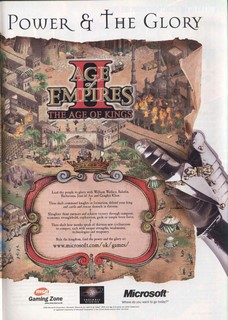
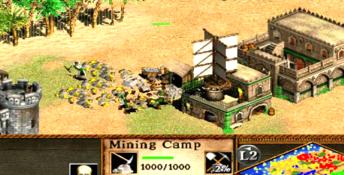


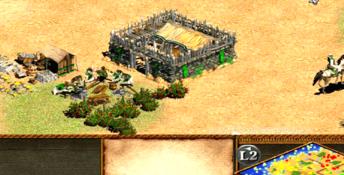
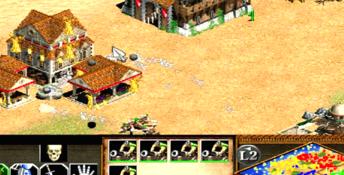


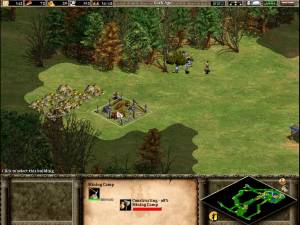
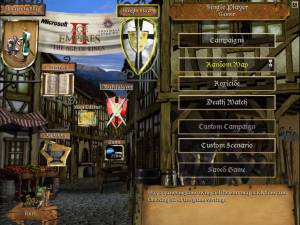




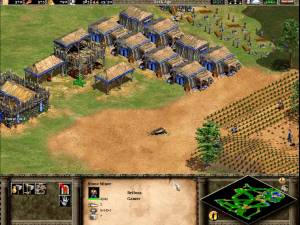
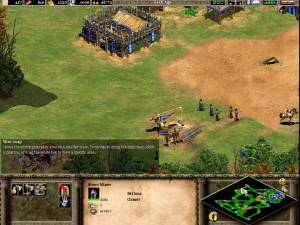



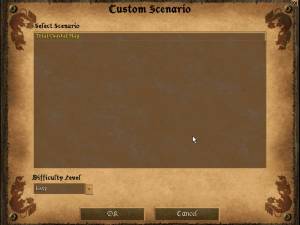
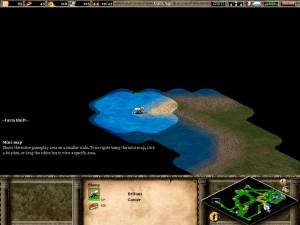
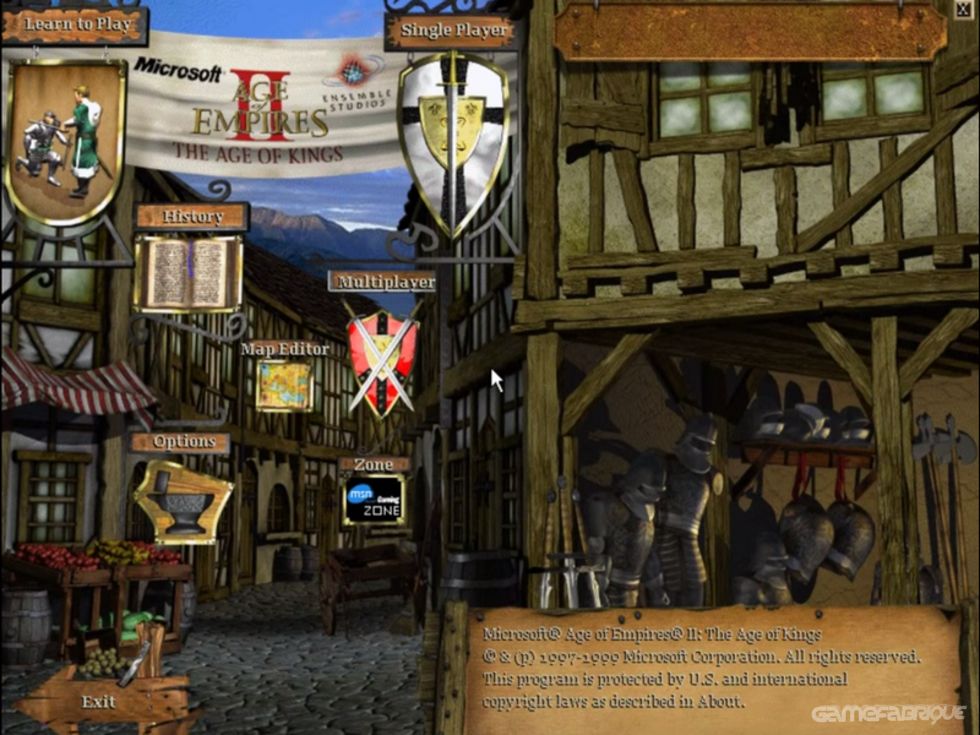





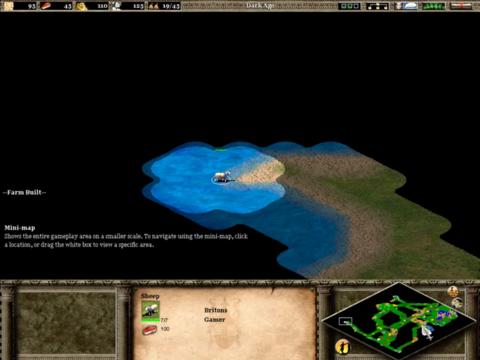
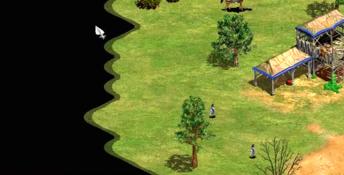
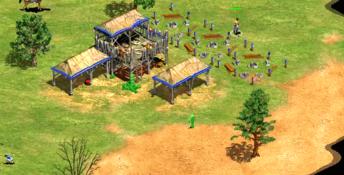
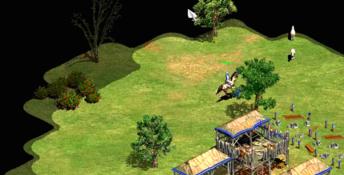

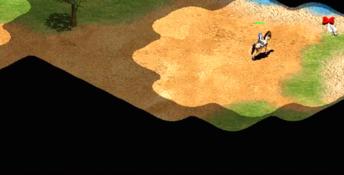

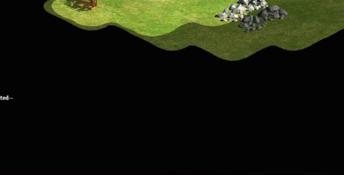
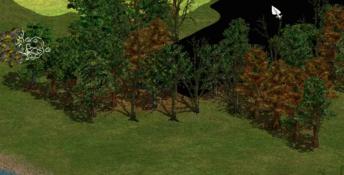
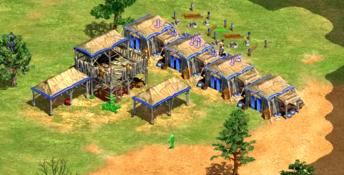

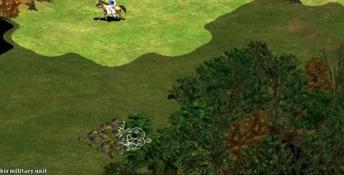


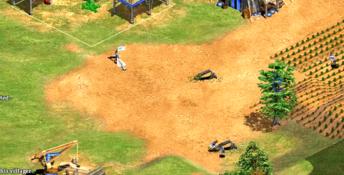

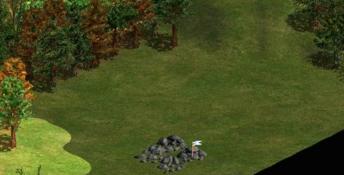



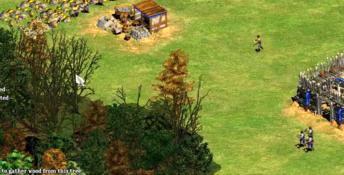
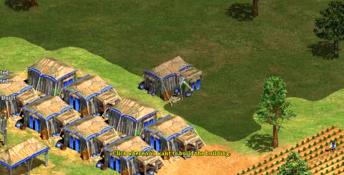



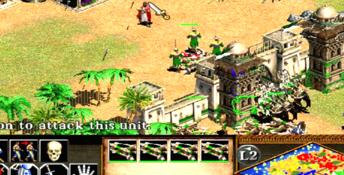



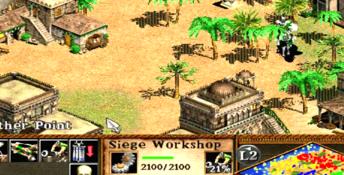



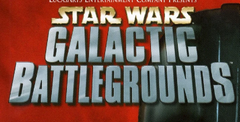 Star Wars: Galactic Battlegrounds
Star Wars: Galactic Battlegrounds
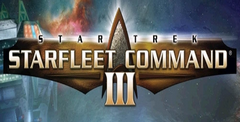 Starfleet Command III
Starfleet Command III
 Total Annihilation
Total Annihilation
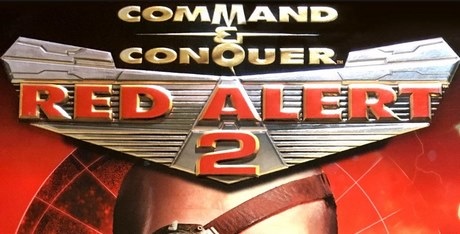 Command & Conquer: Red Alert 2
Command & Conquer: Red Alert 2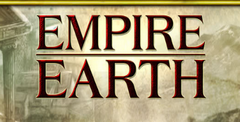 Empire Earth
Empire Earth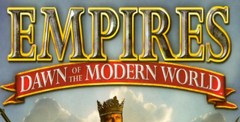 Empires: Dawn of the Modern World
Empires: Dawn of the Modern World
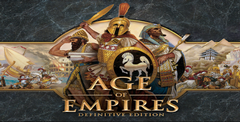 Age of Empires: Definitive Edition
Age of Empires: Definitive Edition
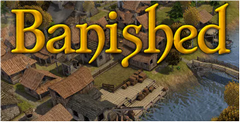 Banished
Banished